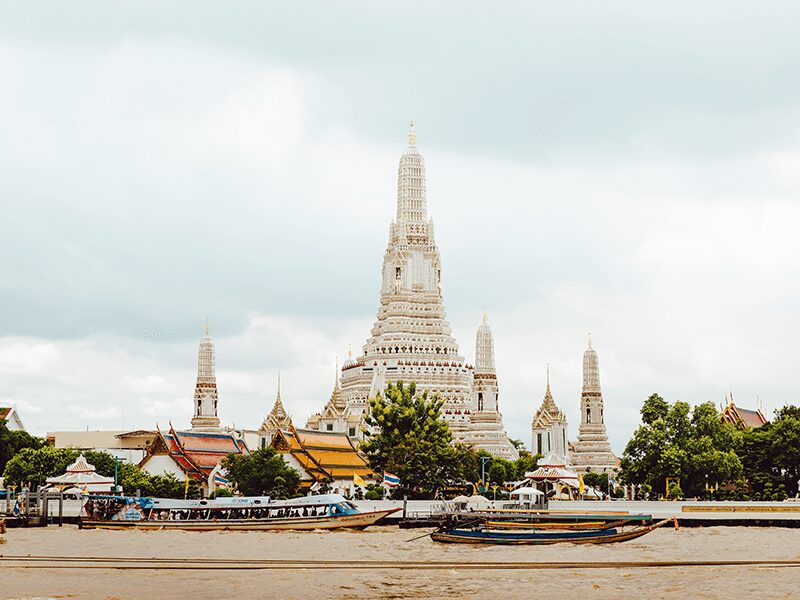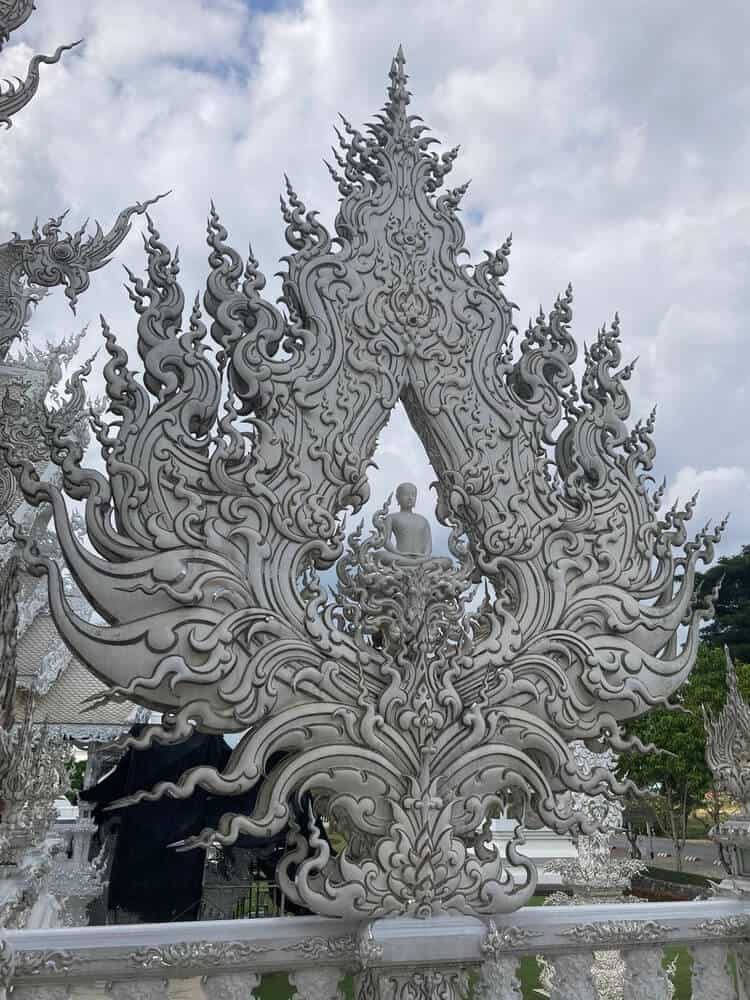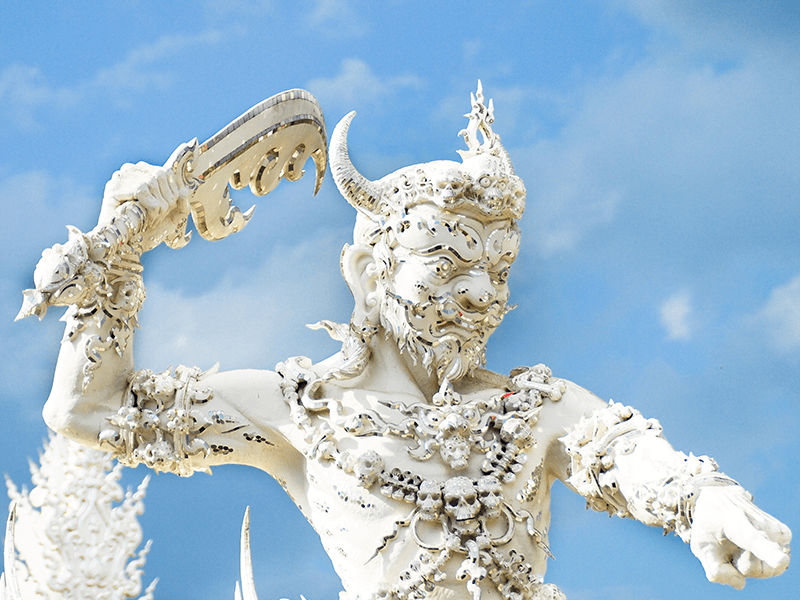This post may contain affiliate links. We may receive a small commission, at no cost to you, if you make a purchase. Read Disclosure.
Chalermchai Kositpipat, the Thai artist who created the strange mix of old traditional Buddhism with modern art hopes that The White Temple in Chiang Rai (also known as Wat Rong Khun) will eventually be on the Must See List.
Not the Must See List of Chiang Rai, but the list of Asia, alongside with the greats such as Angkor Wat, or the Grand Palace.
After visiting the White Temple on our trip to Thailand, I could see how one day this could be a possibility.
The intricacy of the details, the strangeness of the design, and the combination of modern pop culture and tradition makes it one of the most unique tourist attractions in Chiang Rai.
But if you’re thinking of visiting this unique monument in Northern Thailand but you’re not sure how, or what it’s all about, then this complete guide will tell you everything you need to know.
About The White Temple, Chiang Rai

Wat Rong Khun, as it is known by its formal Thai name, is a bizarre and beautiful temple in Chiang Rai.
Set under the bright blue sky, and decorated with mirrored mosaic pieces, this startling monument blinks dazzlingly off the sunlight and the whole area is bathed in a glow of pure white color.
I had the feeling that I had just landed in the middle of the Arctic, rather than the hot and humid heat of Thailand.
While the main temple is complete, the entire temple complex is still work in progress, and isn’t expected to be finished until 2070.

The artist, Chalermchai Kositpipat, who opened the temple to the public in 1997, is said to be finishing off a section at a time, once it’s perfectly clear in his mind how he wants it to look.
It was built on the grounds of Wat Rong Khun, which was largely destroyed by a strong earthquake in 2014.
Chalermchai Kositpipat decided to restore the original Wat Rong Khun temple and expand it, and work is still ongoing.
He anticipates the completion will happen after his death and is training his predecessors to finish his vision.

He has set limitations on single donations to his project as he cannot risk handing over the power to any outside forces and so having his artwork altered in any way other than what appears in his mind.
Inside his head is the constant play between good and evil, which can be seen throughout the temple and its temple grounds in both the sculptures and paintings on the inside.

The…
Click Here to Read the Full Original Article at y Travel Blog…